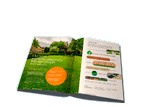How to Grow Mint in Your Garden
Posted on 25/08/2024
Mint is one of the most popular herbs due to its delightful fragrance and versatile culinary uses. Growing mint in your garden is relatively easy and doesn't require much effort if you follow a few key steps.
Choosing the Right Location
Mint can grow in a variety of conditions, but it thrives best in partial shade with moist, well-drained soil. Avoid areas that get direct, scorching sunlight as it can cause the leaves to turn brown and brittle.

Preparing the Soil
To ensure healthy mint growth, you should focus on preparing the soil properly. Mint prefers slightly acidic to neutral soil with a pH level between 6.0 and 7.0. Adding organic compost or well-rotted manure can enrich the soil and improve its texture.
Planting Mint
You can start mint from seeds, cuttings, or transplants. The easiest and most common method is to plant mint from cuttings or transplants. Plant them 18 to 24 inches apart to allow enough space for the plants to spread. Mint has invasive roots, so consider planting it in a pot or container to control its growth.
Watering Requirements
Mint likes consistently moist soil but not waterlogged conditions. Water the mint plants regularly, especially during dry spells. Mulching around the plants can help retain soil moisture and reduce the frequency of watering.
Fertilizing Mint
Mint is not a heavy feeder, but you can give it a boost by applying a balanced, water-soluble fertilizer every 4 to 6 weeks during the growing season. A fertilizer with equal parts of nitrogen, phosphorus, and potassium (NPK 10-10-10) works well.
Pruning and Harvesting
Regular pruning helps keep mint plants bushy and full while preventing them from becoming leggy. Pinch off the tips of the stems regularly to encourage branching. You can start harvesting mint leaves once the plants are about 4-6 inches tall. Harvest in the morning when the essential oils are most concentrated for the best flavor.
Pest and Disease Management
Mint is relatively resistant to pests and diseases, but it can occasionally suffer from issues like spider mites, aphids, and powdery mildew. Using insecticidal soap or neem oil can help control pests. Proper spacing and good air circulation can prevent mold and mildew problems.
Overwintering Mint
If you live in an area with cold winters, you can bring pots of mint indoors or cover outdoor plants with mulch to protect them from frost. Mint is a perennial herb and will come back in the spring if properly cared for during the winter months.
Pros and Cons of Growing Mint
Pros:
- Easy to grow and low maintenance.
- Can be used in various culinary dishes and beverages.
- Fragrant and attractive addition to your garden.
- Beneficial for attracting pollinators like bees and butterflies.
Cons:
- Can become invasive and spread quickly if not contained.
- Susceptible to certain pests like spider mites and aphids.
- Can be sensitive to extreme heat and cold.
Tips for Growing Mint Successfully
- Contain the roots by planting mint in pots or containers to prevent it from spreading uncontrollably.
- Choose a spot with partial shade and well-draining soil for optimal growth.
- Practice regular pruning to keep the plants bushy and healthy.
- Water frequently but avoid overwatering to prevent root rot.
- Use organic mulch to retain soil moisture and reduce weeds.

Takeaways
Growing mint in your garden can be a rewarding experience with minimal effort. By selecting the right location, preparing the soil, and practicing proper watering and pruning, you can enjoy fresh mint throughout the growing season. Be mindful of its invasive nature by containing its roots and monitoring for pests and diseases.
Conclusion
Incorporating mint into your garden is a fantastic way to enhance your cooking and garden's aesthetic appeal. The herb's simplicity in growth and maintenance makes it suitable for beginners and seasoned gardeners alike. With the tips and guidelines provided, you're well on your way to cultivating a bountiful mint harvest. Happy gardening!






 Certified and experienced landscapers
Certified and experienced landscapers



 Get a Quote
Get a Quote